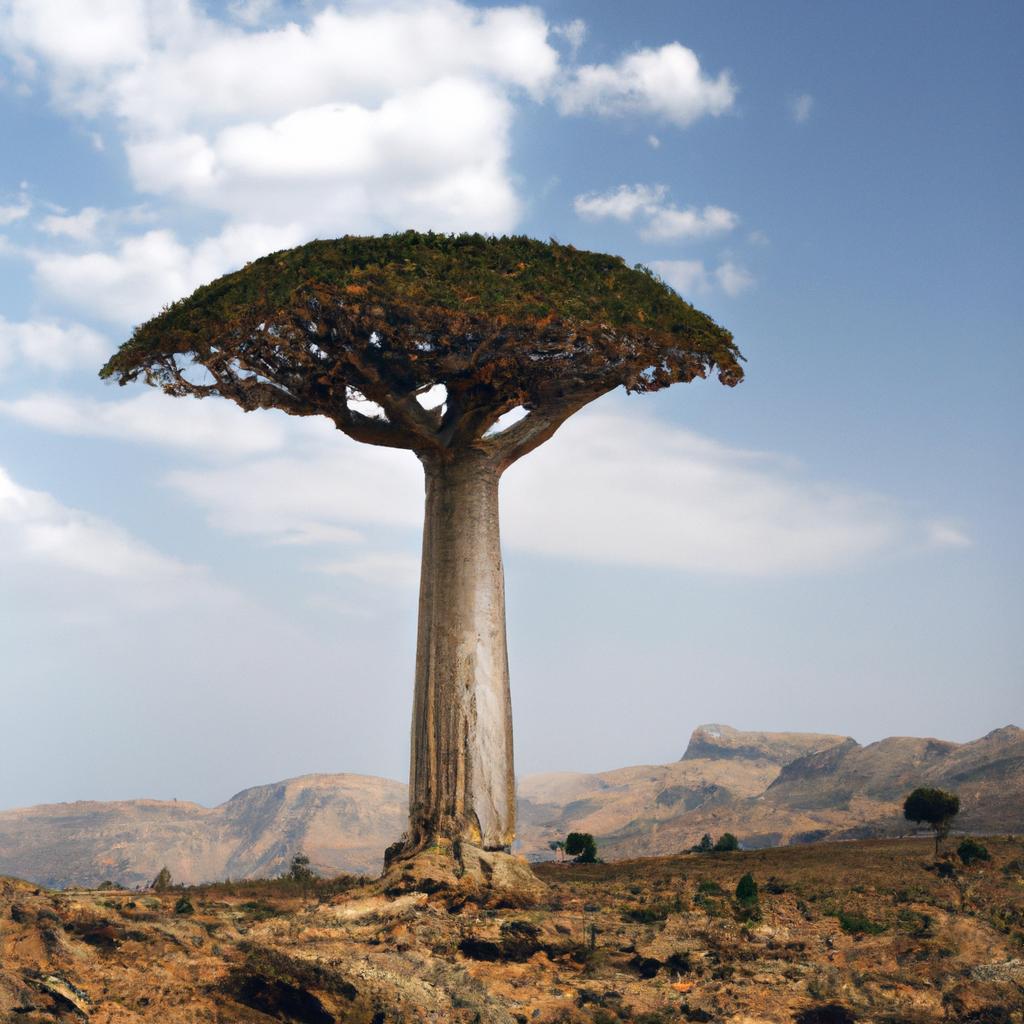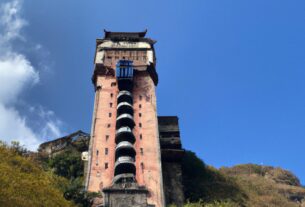When it comes to extraordinary trees, one that immediately captures our attention is the Socotra tree. Its peculiar appearance and impressive size have made it a favorite among nature enthusiasts and botanists. But what sets this tree apart, and why is it crucial to the ecosystem?
The Socotra Tree: A Unique Wonder
The Socotra tree, also known as the dragon’s blood tree, is a rare species native to the Socotra archipelago in the Indian Ocean. Its appearance is striking, with a thick, stout trunk and umbrella-like branches that spread in all directions. Adding to its allure is its deep red sap, which has been used for medicinal purposes for centuries.
Unveiling the Characteristics of the Socotra Tree
The Socotra tree boasts a set of distinct characteristics that distinguish it from other trees. Let’s delve into some of its most notable features:
Physical Appearance and Size
With a stout trunk reaching up to 9 meters in height and a crown that spreads up to 10 meters in diameter, the Socotra tree is an unmistakable sight. Its umbrella-like branches make it instantly recognizable.
The tree’s sap, which oozes a deep red color when cut, holds medicinal properties that have been cherished for centuries.
Habitat and Adaptations
Endemic to the Socotra archipelago, this tree is restricted to this unique region, making it a rare and remarkable species.
To survive in the harsh, arid conditions of the archipelago, the Socotra tree has evolved remarkable adaptations. It can store water in its trunk and branches, aiding its survival during droughts. Additionally, its deep root system taps into underground water sources, while its small, thick leaves minimize water loss through transpiration.
The Significance of the Socotra Tree
The Socotra tree is not just visually captivating; it holds immense value for both humans and animals:
Medicinal Properties and Uses
One of the tree’s most remarkable benefits lies in its medicinal properties. The resin, known as dragon’s blood, has been utilized in traditional medicine for diarrhea, dysentery, respiratory infections, wound healing, and cosmetic purposes.
Economic Importance
In the Socotra archipelago, the Socotra tree plays a vital economic role. Pharmaceutical companies rely on its resin for medicines, cosmetics, and dyes, while the wood is used for construction and carving. Additionally, the tree’s fruit provides sustenance to local communities.
Cultural Significance
The Socotra tree holds rich cultural significance on the archipelago, symbolizing the island itself. Its resin, deeply rooted in local traditions, is used in rituals and local artwork, showcasing the tree’s importance in the local culture.
Protecting the Socotra Tree
Like many other species, the Socotra tree faces threats:
Human Activities
Logging and grazing pose significant dangers to the Socotra tree and its habitat. While the population on the archipelago is small, the demand for wood and agricultural land grows, putting this unique tree at risk.
Climate Change
The Socotra archipelago’s susceptibility to droughts and extreme weather conditions poses a threat to the tree’s survival. Rising temperatures facilitate the spread of invasive species that compete for resources with the Socotra tree.
Conservation efforts are in place to protect the tree’s habitat. The Socotra Conservation and Development Programme (SCDP) conducts research, educates communities about conservation, and collaborates with the government to establish protected areas. Additionally, the International Union for Conservation of Nature (IUCN) has listed the Socotra tree as a vulnerable species, drawing attention to its conservation needs.
Fascinating Facts and Trivia
The Socotra tree is brimming with interesting tidbits:
- The tree’s umbrella-like shape facilitates moisture collection, aiding its survival in the Socotra archipelago’s arid conditions.
- Its red sap, dragon’s blood, has been historically used for medicinal purposes.
- Some Socotra trees are estimated to be over 500 years old.
Conclusion: A True Natural Wonder
In conclusion, the Socotra tree is not just a visually captivating plant but also a crucial contributor to the ecosystem. Its unique characteristics enable it to provide food and shelter to various animal species, making it an essential part of the local food chain.
However, this remarkable tree faces threats from human activities and climate change. Efforts are being made to protect and conserve the Socotra tree, but more action is needed to ensure its survival for future generations.
At TooLacks, we are dedicated to spreading awareness about remarkable topics like the Socotra tree. By understanding and appreciating its distinctive features and benefits, we can work together to preserve and safeguard this precious marvel. Let’s celebrate the beauty and significance of the Socotra tree and take action to secure its future for generations to come.



